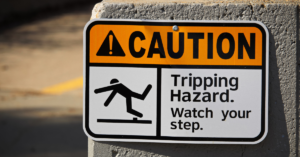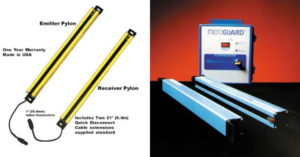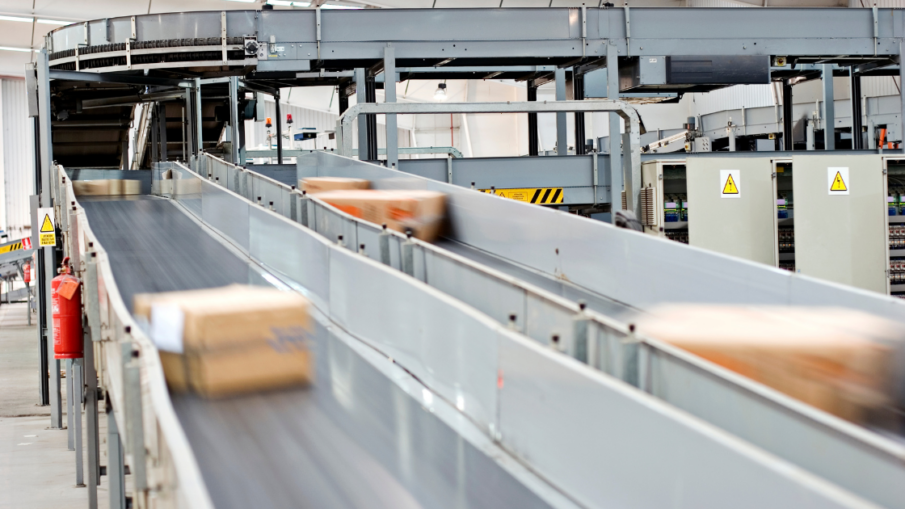Conveyor belt systems are critical in manufacturing, warehousing, and distribution, enabling the smooth transport of materials. However, without proper machine guarding and safety measures, they pose serious risks, including entanglement, pinch points, and falling objects. Businesses must ensure their conveyor systems comply with OSHA safety standards and other regulatory requirements to create a safe work environment and avoid costly fines.
This guide outlines 10 essential steps for conveyor belt safety compliance, covering common hazards, best practices, and the safety devices that protect workers while maintaining productivity.
Understanding Conveyor Belt Safety Compliance
Compliance with conveyor belt safety regulations is crucial for reducing workplace injuries and avoiding regulatory violations. OSHA 29 CFR 1910.219 and 29 CFR 1926.555 outline key safety requirements for conveyor systems in general industry and construction, respectively.
Key Conveyor Belt Safety Regulations
- OSHA 29 CFR 1910.219 – Requires guarding for moving parts, including pulleys, belts, gears, and rollers.
- OSHA 29 CFR 1926.555 – Covers conveyor systems in construction, requiring emergency stop controls and adequate machine guarding.
- ISO 13849 – Establishes safety standards for control systems, ensuring conveyors operate with acceptable risk levels.
- ANSI B20.1 – Provides industry best practices for conveyor safety.
Why Compliance Matters
- Prevents Workplace Injuries – Reduces accidents caused by unguarded machinery.
- Avoids OSHA Fines – Machine guarding violations can result in fines exceeding $15,000 per infraction.
- Improves Productivity – Reduces downtime caused by workplace injuries and equipment failures.
Step 1: Identify Conveyor Belt Hazards

The first step in compliance is conducting a thorough risk assessment to identify hazards associated with conveyor belt operations.
Common Conveyor Hazards
- Entanglement Risks – Workers can get caught in pulleys, rollers, and belts.
- Pinch Points – Crushing injuries occur where conveyor belts meet rollers.
- Falling Objects – Loose materials can fall from the conveyor, injuring workers below.
- Unintended Activation – Unexpected conveyor startup can lead to serious injuries.
Risk Assessment Best Practices
- Evaluate each conveyor system’s moving parts and potential hazards.
- Identify areas where machine guarding, emergency stops, or warning systems are needed.
- Document all findings and implement necessary safety measures.
Step 2: Install Machine Guarding on Moving Parts
One of the most cited OSHA violations involves conveyor systems that lack proper machine guarding. Employers must ensure all hazardous moving parts are covered with protective barriers.
Types of Machine Guards for Conveyors
- Fixed Guards – Permanent barriers that enclose hazardous areas.
- Interlocked Guards – Shut down the conveyor when opened.
- Adjustable Guards – Provide flexibility for maintenance while ensuring safety.
Best Practice: Install interlock switches to prevent operation when guards or access doors are open.
Step 3: Implement Emergency Stop Controls (E-Stops)
OSHA requires that conveyor belt systems have emergency stop controls that are easily accessible to workers. These controls allow immediate shutdown in case of an emergency.
Types of Emergency Stop Controls
- Push-Button E-Stops – Located at key points along the conveyor system.
- Pull Cord E-Stops – Run along the entire length of the conveyor for immediate shutdown.
- Safety Stop Bars – Positioned along conveyor edges for fast access.
Best Practice: Install emergency stop controls along the conveyor line for quick intervention.
Step 4: Use Safety Light Curtains for Additional Protection

Safety light curtains are advanced non-contact safety devices that stop conveyor belts when a worker enters a hazardous zone.
How Safety Light Curtains Work
- Emit an invisible beam across hazardous areas.
- Stop conveyor operation immediately if the beam is interrupted.
Best Applications for Light Curtains
- Entry and exit points of conveyor systems.
- High-speed conveyor lines where workers frequently interact with moving parts.
Step 5: Install Perimeter Guarding to Restrict Access
Workers should never have unrestricted access to hazardous conveyor areas. Perimeter guarding serves as a physical barrier, preventing accidental entry into dangerous zones.
Effective Perimeter Guarding Solutions
- Wire Mesh Fencing – Prevents unauthorized access while maintaining visibility.
- Interlocked Gates – Automatically stop conveyors when opened.
- Height-Adjusted Barriers – Prevent reaching over or under conveyor systems.
Best Practice: Use perimeter guarding systems to create safe zones around conveyor operations.
Step 6: Prevent Falls with Overhead and Side Guarding
Loose materials can fall off conveyor belts, creating injury risks for workers below. Proper guarding helps contain these materials.
Recommended Safety Measures
- Side Guards – Prevent materials from falling off conveyor edges.
- Overhead Protection – Shields workers from falling objects.
- Catch Trays or Mesh Nets – Contain debris or loose materials.
Step 7: Implement Lockout/Tagout (LOTO) for Maintenance Safety

Maintenance workers face serious risks when servicing conveyors if proper lockout/tagout (LOTO) procedures are not in place.
Key LOTO Requirements for Conveyors
- De-energize all power sources before servicing.
- Use LOTO locks and tags to prevent accidental startup.
- Train employees on proper shutdown and restart procedures.
Step 8: Conduct Routine Conveyor Safety Inspections
Regular safety inspections ensure that conveyor belts remain compliant with OSHA standards.
Inspection Checklist
- Verify that all guards and barriers are intact.
- Check emergency stop functions.
- Inspect belts, pulleys, and rollers for wear.
- Ensure warning labels and safety signs are visible.
Step 9: Train Employees on Conveyor Safety
Worker training is critical for ensuring proper use of safety devices and preventing injuries.
Training Topics to Cover
- Machine guarding procedures.
- Proper use of emergency stops.
- Conveyor belt startup and shutdown protocols.
- How to report unsafe conditions.
Additional Resource: Learn more about OSHA conveyor safety training to enhance your facility’s safety program.
Step 10: Monitor and Continuously Improve Safety Compliance

Safety compliance is an ongoing process that requires constant evaluation and improvement.
Best Practices for Continuous Compliance
- Schedule quarterly safety audits.
- Update machine guarding systems as needed.
- Provide refresher training for employees annually.
- Stay updated with OSHA regulatory changes.
Final Thoughts on Conveyor Belt Safety Compliance
Ensuring OSHA and ISO compliance for conveyor belt systems requires a proactive approach that includes proper machine guarding, regular maintenance, and employee training. By implementing safety light curtains, emergency stops, and perimeter guarding systems, facilities can create a safer workplace and avoid costly penalties.
For reliable machine guarding solutions, explore Pinnacle Systems’ safety products to keep your conveyor belt systems fully compliant.

